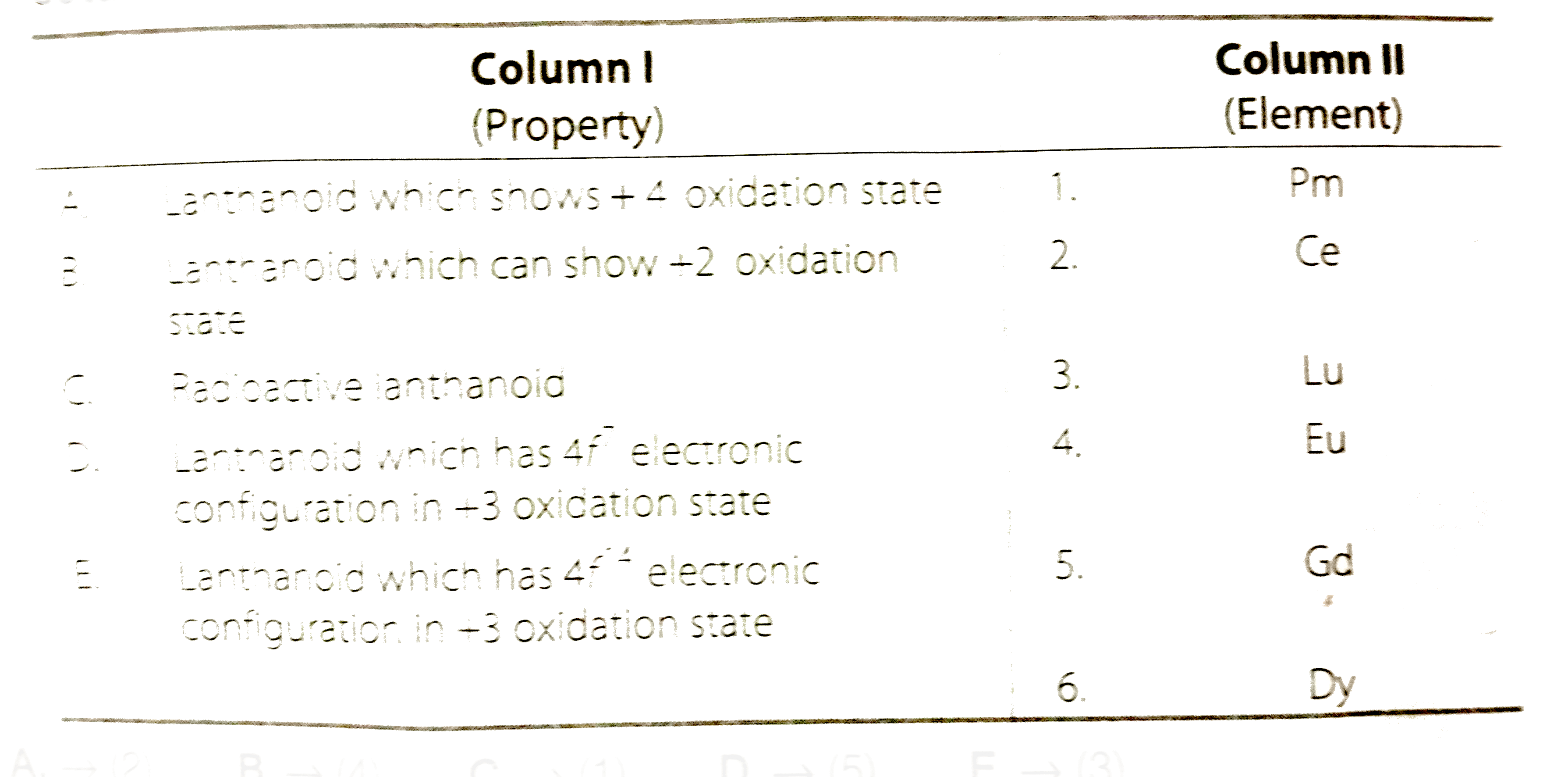Na2S2O3 may react with the compound given in Column-I, Na2S2O3 exhibits the properties of the type give in the coloumn-II, matter the reactants given in column-I with the type of property, properties given in Column-II
COLUMN-ICOLUMN-II(Reactant)(Type of property)(A)Cl2(p)Complexing agent(B)AgBr(q)Disproportionation(C)HCl(r)Only as reductant(D)I2(s)An antichlor Solution in Telugu
A) Na2S2O3+Cl2+H2O→Na2SO4+2HCl+S− Hence it act as antichlor and it is oxidized by Cl2.
B) 2Na2S2O3+AgBr→Na3[Ag(S2O3)2]+NaBr− Used photography fixing agent i.e., complexing agent.
C) Na2S2O3+2HCl→2NaCl+SO2+S+H2O− Disproportional reaction.
D) 2Na2S2O3+I2→Na2S4O6+2NaI− It is oxidized by I2 quantitatively.
Topper's Solved these Questions
- VIA GROUP ELEMENTSBOOK - AAKASH SERIESCHAPTER - VIA GROUP ELEMENTSEXERCISE - PRACTICE SHEET - 4 (Integer answer type Questions)
2 Videos
- VIA GROUP ELEMENTSBOOK - AAKASH SERIESCHAPTER - VIA GROUP ELEMENTSEXERCISE - PRACTICE SHEET - 5 (Linked Comprehension type questions)
3 Videos
- VIA GROUP ELEMENTSBOOK - AAKASH SERIESCHAPTER - VIA GROUP ELEMENTSEXERCISE - PRACTICE SHEET - 4 (Linked Comprehension type questions)
6 Videos
- VA GROUP ELEMENTSBOOK - AAKASH SERIESCHAPTER - VA GROUP ELEMENTSEXERCISE - PRACTICE EXERCISE
51 Videos
- VII GROUP ELEMENTSBOOK - AAKASH SERIESCHAPTER - VII GROUP ELEMENTSEXERCISE - OBJECTIVE EXERCISE -4
55 Videos
Similar Questions
Sulphuric acid acts as a powerful dehydrating agent. How many no of carbons are formed when glucose molecule is dehydratred by H2SO4 as reagent
View SolutionPassage-II:

'C' is
View SolutionPassage - I :

Yellow solid 'A' is
View SolutionWhich of the following reacts rapidly with oxygen in the air at ordinary temperature?
View Solution(A): The bond dissociation energy of fluorine is less than bromine.
(R): In fluorine molecule, large lone pair electronic repulsions and appreciable internuclear repulsions are present.
View SolutionNa_(2)S_(2)O_(3) may react with the compounds given in coloum I. Na_(2)S_(2)O_(3) exhibits the properties of the type given in the coloum II, match the reactants given in coloum I with the type of property/properties given in coloum II. {:(,"Column I(reactant)",,"Coloumn II(type of property shown)"),("a)",Cl_(2),,"p) complexing agent"),("b)",AgBr,,"q) dispropotionation"),("c)","HCl",,"r) only as reductant"),("d)",I_(2),,"s) an antichlor"):}
View SolutionMetch the properties given in column I with the metals given in column II

View SolutionMatch the properties given in Column I with the metals given in Column II

View SolutionMatch the property given in Column I with the element given in Column II.

View SolutionMatch the properties given in Column I with the metals given in Column II.

View SolutionMatch the type of colloid (column I) with its property (column II)

View Solutionकॉलम-I में दिए गए चालकों के गुणों का कॉलम-II में दी गई राशियों से मिलान करें।

View SolutionMatch the molecular species in Column-I and their magnetic and molecular orbital properties in Column-II :
Column-IColumn-II(A)O2(P)Bond order = 2 (B)N2(Q)Oiamagnetic (C)H2(R)Bond order= 3(D)O2−2(S)Paramagnetic
View SolutionNa_(2)S_(2)O_(3) may react with the compound given in Column-I, Na_(2)S_(2)O_(3) exhibits the properties of the type give in the coloumn-II, matter the reactants given in column-I with the type of property, properties given in Column-II {:("COLUMN-I","COLUMN-II"),((A)SO_(2),(p)"turns acidified "K_(2)Cr_(2)O_(7)" solution green"),((B)CO_(2),(q)"turns blue is Red"),((C )H_(2)S,(r )"turns lime water milky"),((D)H_(2)O_(2),(s) "used for restoring old paintings in the museums"):}
View SolutionCOLUMN-ICOLUMN-II(A)Na2S2O3(p)NaCl(B)Na2S2O3+AgNO3(q)Na3[Ag(S2O3)2](C)Na2S2O3+Cl2+H2O(r)Na2SO4(D)Na2S2O3+I2(s)Na2S4O6
View Solution
